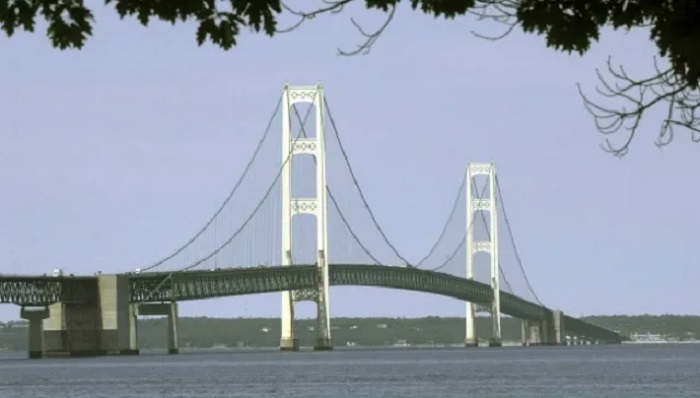GRAND RAPIDS, Mich. — The National Transportation Safety Board (NTSB) has released a list of 68 bridges across the United States that require vulnerability assessments, highlighting concerns over the risk of collapse should these structures be struck by a moving vessel. Among the notable names on the list is the iconic Mackinac Bridge in Michigan, a vital connector between Michigan’s Upper and Lower Peninsulas.
The NTSB’s full list, issued this month, includes bridges that the agency believes may not meet the necessary safety thresholds in the event of a maritime collision. The vulnerability assessments will help determine whether the risk of collapse, should such an incident occur, exceeds the safety standards established by the American Association of State Highway and Transportation Officials (AASHTO).
In a statement, the NTSB clarified that the inclusion of a bridge on this list does not mean that collapse is imminent or likely. Rather, it urges bridge owners to evaluate their infrastructure’s resilience to ensure it aligns with national safety guidelines.
The Mackinac Bridge, which opened in 1957 and has since become a vital part of Michigan’s transportation network, is one of the key structures included in the NTSB’s recommendations. While it has stood as a symbol of engineering for nearly seven decades, the assessment aims to ensure that it remains up to modern safety standards, particularly concerning the risk posed by maritime traffic.
Other notable bridges on the list include the Golden Gate Bridge in San Francisco, the Brooklyn Bridge in New York, and the Chicago Skyway. These bridges, each with significant historical and architectural value, are also critical to the transportation systems in their respective regions.
The NTSB’s list follows the collapse of the Francis Scott Key Bridge outside of Baltimore, which occurred nearly a year ago. The bridge, a vital thoroughfare for commuters, was struck by a container ship that had lost power, causing one of its main support pillars to be damaged and eventually leading to the collapse of a major portion of the bridge. This tragic incident has brought renewed focus to the vulnerability of aging infrastructure in the face of modern maritime traffic.
While the NTSB’s recommendations are not indicative of immediate danger, they highlight a pressing need for infrastructure assessments, especially in areas where increased maritime activity may pose unforeseen risks to bridges that were not originally designed with such considerations in mind.
Bridge owners are now tasked with reviewing their structures’ vulnerabilities and ensuring that necessary precautions are taken to safeguard public safety. As the NTSB continues its investigations and assessments, the agency urges state and local transportation authorities to act swiftly to address any identified risks.







